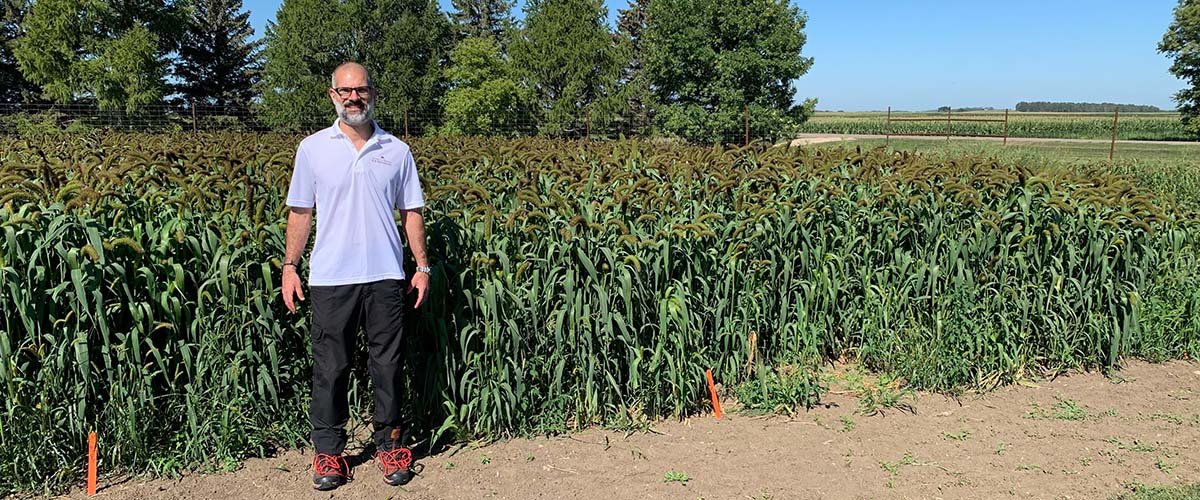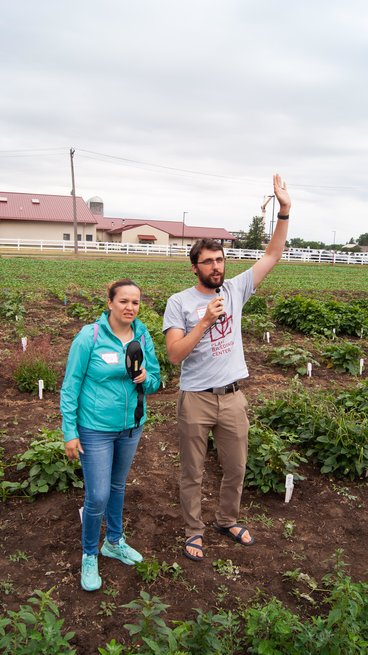
Home field advantage
East African immigrant farmers grow culturally relevant crops in Minnesota; U of M researchers share agricultural management expertise

Agriculture is critical to Minnesota’s economy and the state has long been known for producing an abundance of traditional crops like corn, soybeans, and wheat. Agriculture also plays a major role in Minnesota culture and heritage, and farming is nothing new to Minnesota’s emerging immigrant population where agriculture continues to be crucial to economic growth in East African nations like Kenya and Somalia.
Today, East African immigrants are expanding the state's crop culture to include foods – such as jute mallow and spider wisp – native to their home countries. The Southwest Research and Outreach Center (SWROC) in Lamberton and the Sand Plain Research Farm (SPRF) in Becker are two of the University of Minnesota’s Research and Outreach Centers where researchers are especially interested in incorporating more culturally significant crops into Minnesota agriculture to support immigrant farmers.
Although East African immigrants started arriving three decades ago to the Midwest, there have been a limited number of people in the community actively participating in farming in the state. This is largely due to the hurdles of securing land, growing crops, and finding a customer base for their products. Emerging farmers lack the economic opportunities of more established farmers, and face substantially greater barriers of success.
Paulo Pagliari, an associate professor in the Department of Soil, Water, and Climate at the University of Minnesota, is leading a research project to fill the knowledge gap of identifying the best management practices for five new crop families significant to East African farmers. This project has desired outcomes of developing nutrient recommendations for the crop families, accessing seed, and selecting the best adapted varieties. In order to find climate-appropriate crop varieties, this study plants five traditional crops from East Africa and Southeast Asia. It also analyzes the optimal nutrient management techniques and other potential limiting factors for these crops, such as weeds, insects, and viruses. “Immigrants are critical to a growing and thriving Minnesota, and this work helps them establish their roots here and makes Minnesota their home for generations to come,” said Pagliari.
Developing biodiversity

Crop biodiversity is good for the environment, the food supply, and human health, and finding culturally significant crops can contribute to improved health and a more diverse landscape. Because it has a diversity of habitats, soil types, and sociocultural history, Minnesota is an excellent place to conduct these investigations. A lot of the African and Asian populations are also closely connected to Minnesota and the Midwest, where there is already a large East African and Hmong population relative to the rest of the United States.
Moses Momanyi, whose incubator program Kilimo Minnesota is ushering in a new generation of organic farmers, is one key contributor. Kilimo is an organic incubator farm with the aim of empowering African immigrant farmers socially and economically through training new farmers, increasing their access to farmland, and promoting community. In 2020, Klimo started working with new farmers, and by 2022, it had more than 32 farmers on board. “This farming program is a fantastic fit for Minnesota because of our environment, which allows us to cultivate a wide variety of crops, and our sense of community,” said Momanyi.
A bright future for East African agricultural products
The U of M collaborates directly with beginning farmers to conduct trials and foster stronger ties between these farmers and university research initiatives through three partner organizations: Big River Farms, the Somali American Farmers Association, and Kilimo Minnesota/Dusk2Dawn Farm. The research team conducts educational outreach, such as talks about nutrient management for growers, across the incubator programs and participating farms.
In addition, U of M researchers help take the guesswork out of fertilizer inputs, variety selection, and planting dates, so farmers can proactively manage potential problems. Because Minnesota has stressors that aren’t present in East Africa — particularly insects and pathogens including brassica bugs, the brown marmorated stink bug, rootworm, rust, blight, and canker — Extension specialists offer management recommendations and update information online as new threats arise.
By supporting emerging farmers and their desire to grow culturally relevant crops, their broader communities can benefit. This research project aims to help growers fulfill an increasing demand for East African crops in the hopes of establishing a market for future farmers to provide for these emerging communities.
“Minnesota is fortunate to have such a robust community of East African immigrants, and we are eager to keep supporting a growing market for their crops,” said Momanyi. “By expanding crop biodiversity in the state, we are making a positive impact in a multitude of ways, from enriching our culture with a diversity of foods, and promoting the health of both people and the land.”
This work is supported by the Minnesota Department of Agriculture - Agricultural Growth, Research and Innovation (AGRI) Program





